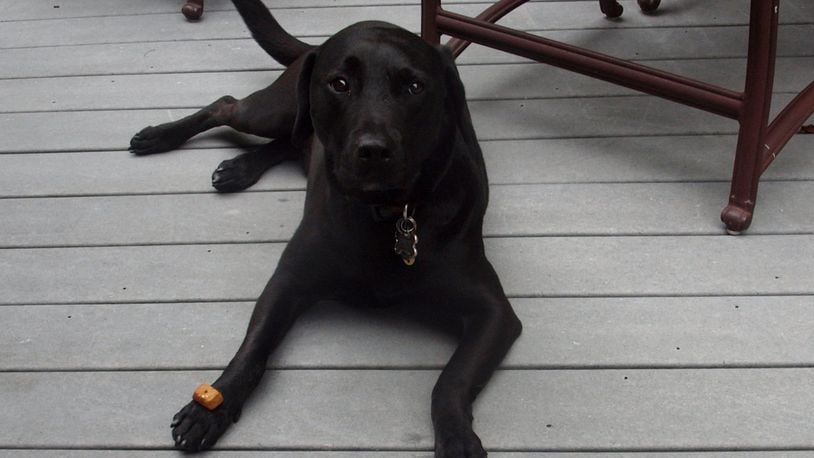» Karin Spicer on letting a dog sleep in owners' bed
The books ranged from understanding behavior (American College of Veterinary Behaviorists “Decoding Your Dog”) to dog games and tricks (Sophie Collins’s “Fun Games for a Smarter Dog”).
Naturally, confusion abounded.
Didn’t the gift bearers remember Ed and I experienced the fun of growing up with dogs? We both had miniature schnauzers.
Fritz was Ed’s childhood companion. The pooch jumped into more trouble than Ed. Which, according to Ed’s mom, is saying a lot.
Marking his territory on the living room’s silk curtains was one escapade. Jumping out of a car’s window when the car was in motion was another.
Maxie, my family’s dog was a bit more tame. She only ate non-edible stuff.
Eating the bottom row of ornaments on our Christmas tree is still a favorite family story. We picked up “sparkly” poop for days.
As a married couple, we’ve had two other dogs before Teddy.
Our first dog, Mocha, a miniature schnauzer was perfect.
She didn’t chew up our stuff. She didn’t have accidents.
Mocha believed she was human and acted accordingly.
Lucy, our mixed-breed second dog, was a bit of a mess.
As a younger dog when she was stressed, the pup chewed up anything in her reach.
That pooch was funny and loving and loyal.
That brings me back to the “gifts.”
The book-giving frenzy had nothing to do with us and everything to do with Teddy.
Our family and friends are gaga over that pooch.
So of course, the weekly questions soon followed after the unwrapping of the gifted books.
Have you had a chance to read the book I got you? Gained any insight on Teddy’s personality? What new tricks has Teddy learned?
Apparently, these folks expected me or us to read these books.
Choosing which one to read first was pretty easy. Dog games and tricks are fun.
Collins’ book, “Fun Games for a Smarter Dog,” was a surprise.
Balancing a treat on Teddy’s nose was always something I’ve wanted him to do. A real party showstopper.
Teddy and I worked on this trick before I read the book. We weren’t successful.
Collins explained that for most dogs this trick is difficult to master.
The book offered an easier version.
Teddy was told to lie down then I placed a treat on his front paw.
The pooch was then told to wait. Finally, he was told to “Watch me.”
After about 10 seconds, Teddy was given the “OK” and he promptly gobbled up his reward.
The next book I tackled was “Decoding Your Dog.”
Above the book’s title its purpose was clearly stated, “Explaining Common Dog Behaviors and How to Prevent or Change Unwanted Ones.”
Teddy barks at cars, trucks, bicycles, anything that passes by the front of our home.
It’s annoying.
The chapter authors simply said to shut the curtains or limit Teddy’s access to the window(s).
Now when Teddy and I enter the study to work, the windows’ bottom shutters are closed.
This simple solution has cut his barking by a third.
The three remaining books’ spines still haven’t been broken.
I promised my family and friends that the other books would get read. Eventually.
Karin Spicer, a magazine writer, has been entertaining families for more than 20 years. She lives in Bellbrook with her family and two furry animals all who provide inspiration for her work. She can be reached at spicerkarin@gmail.com.
Three reasons children should read to dogs
1. Reading out loud to a dog can be stress free.
2. It can boosts children's confidence.
3. Dogs aren't judgmental.
About the Author
